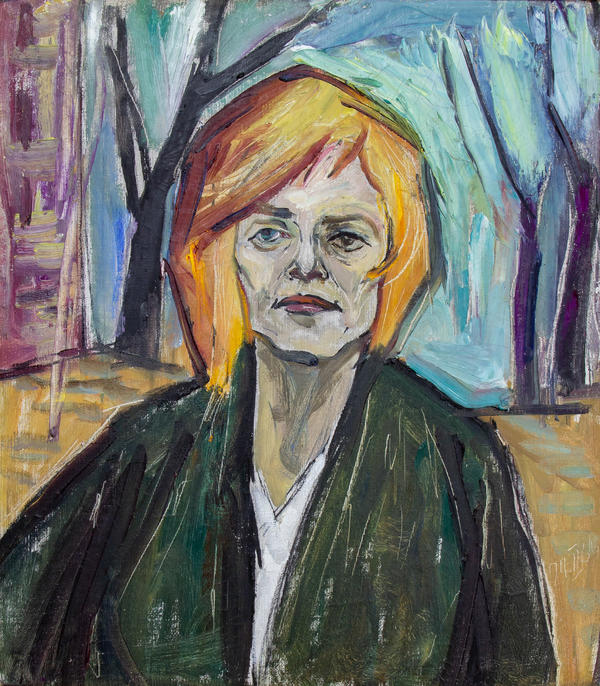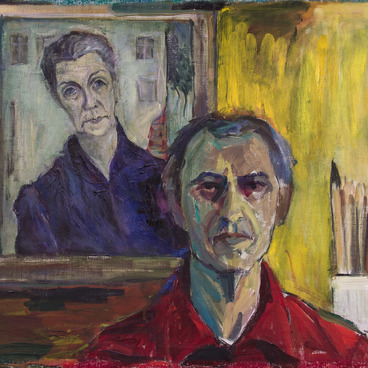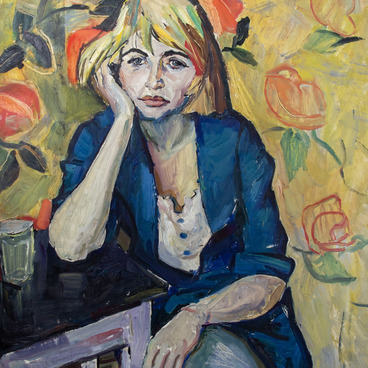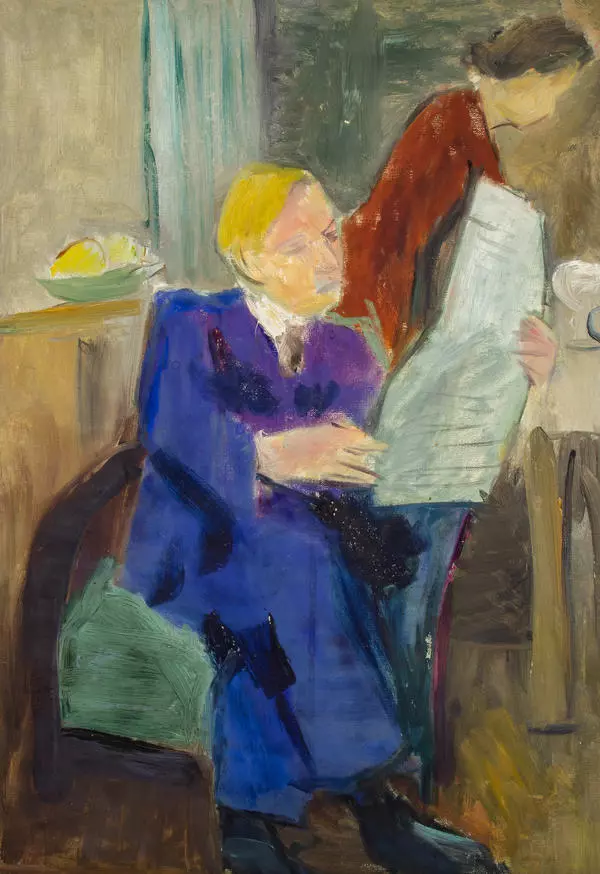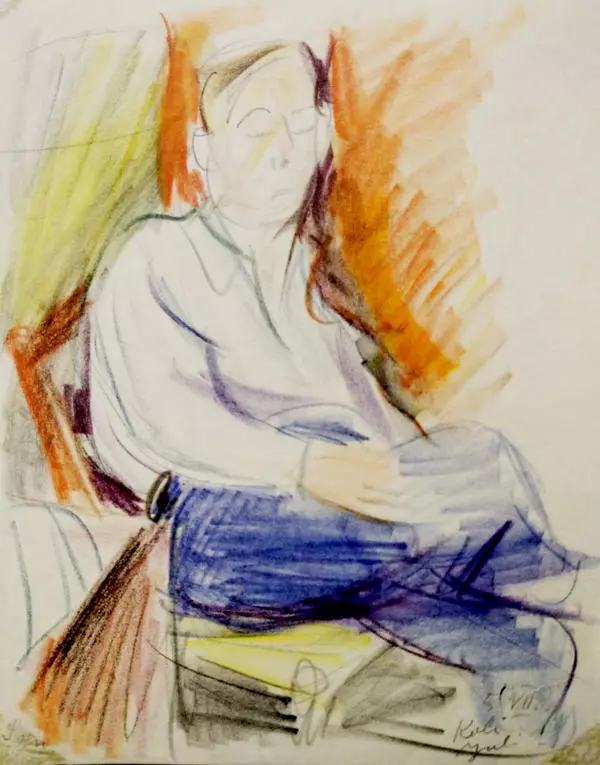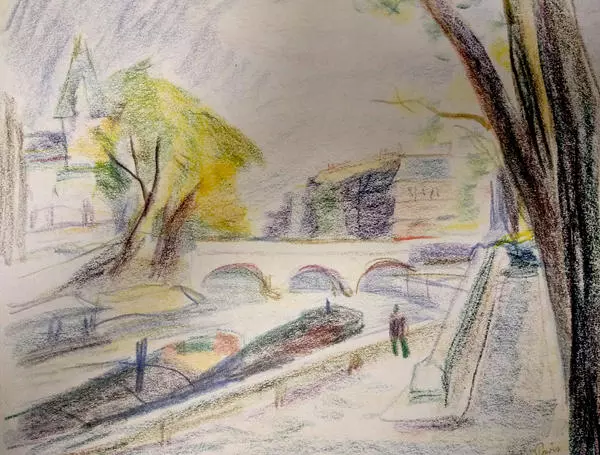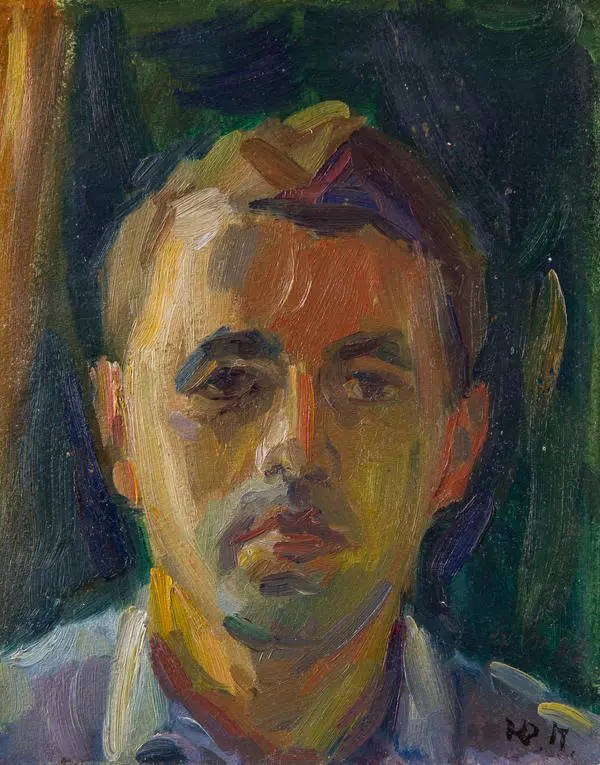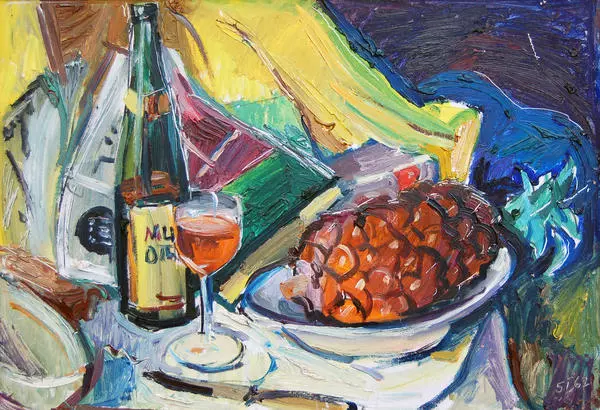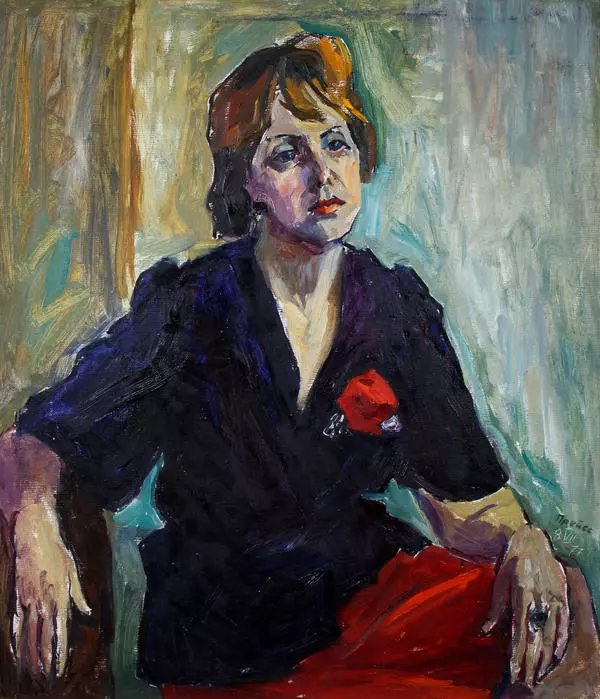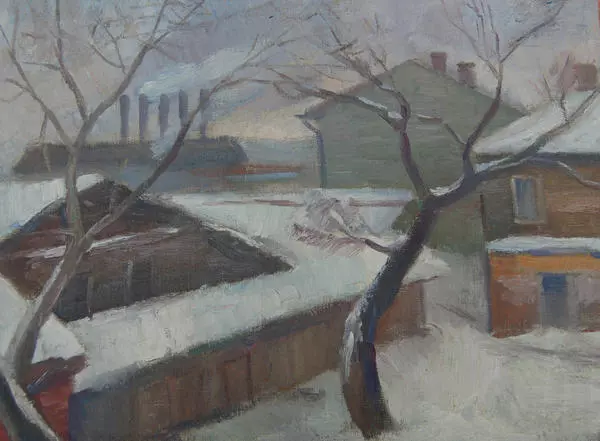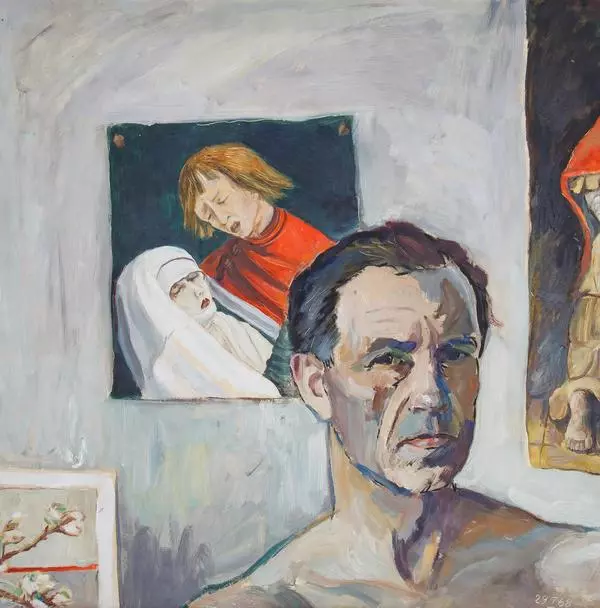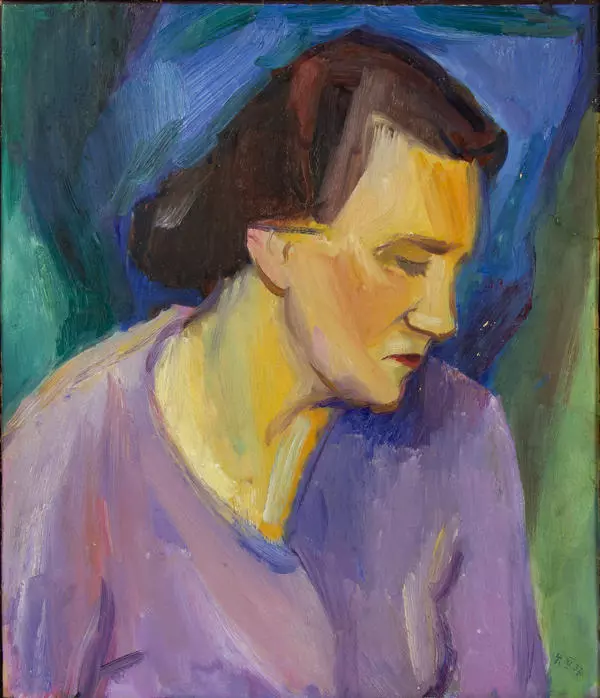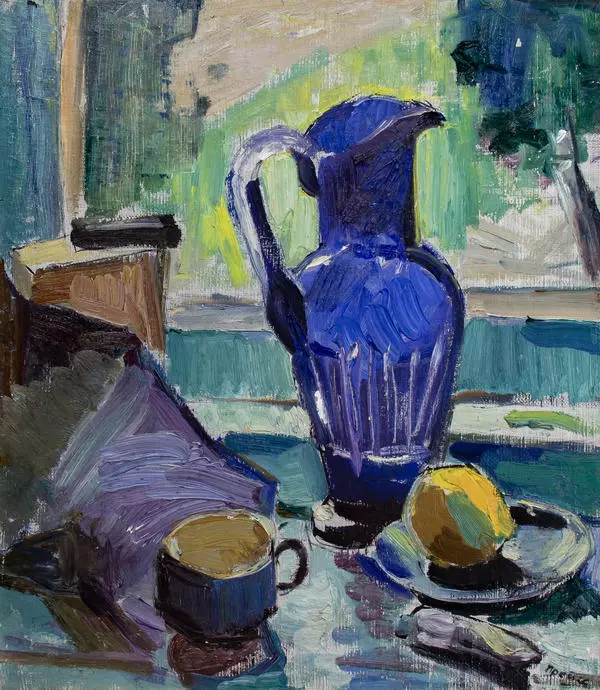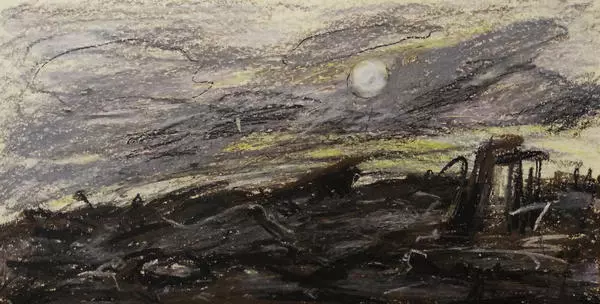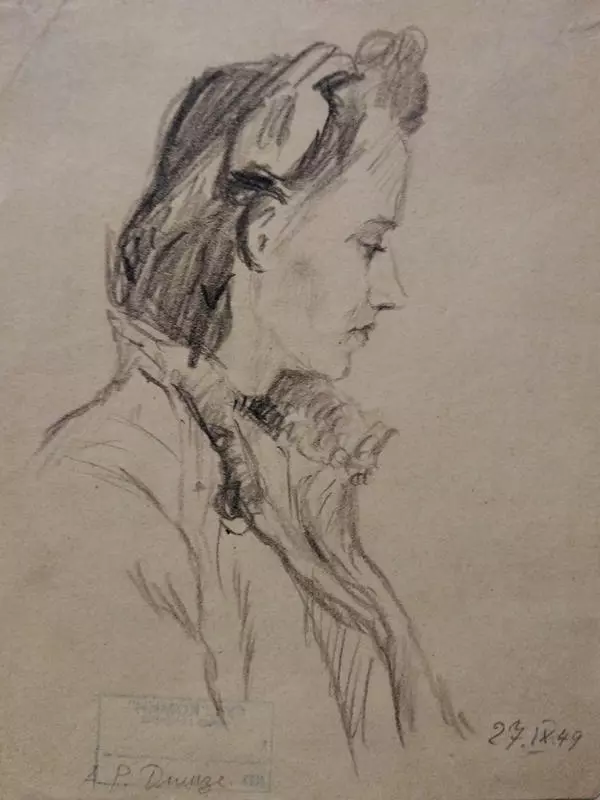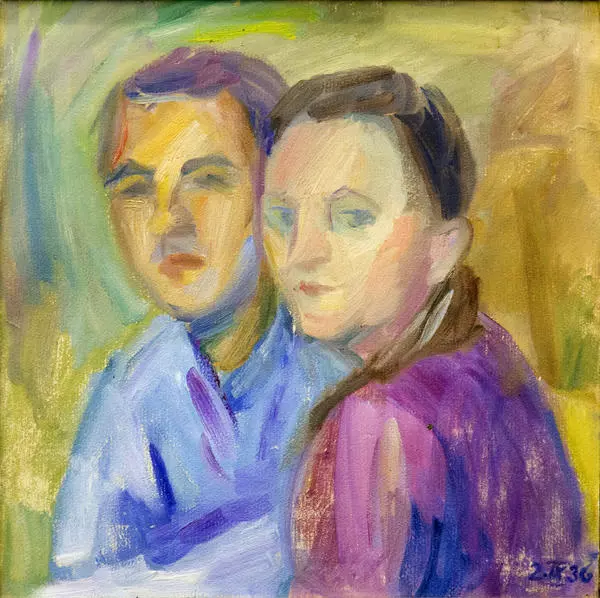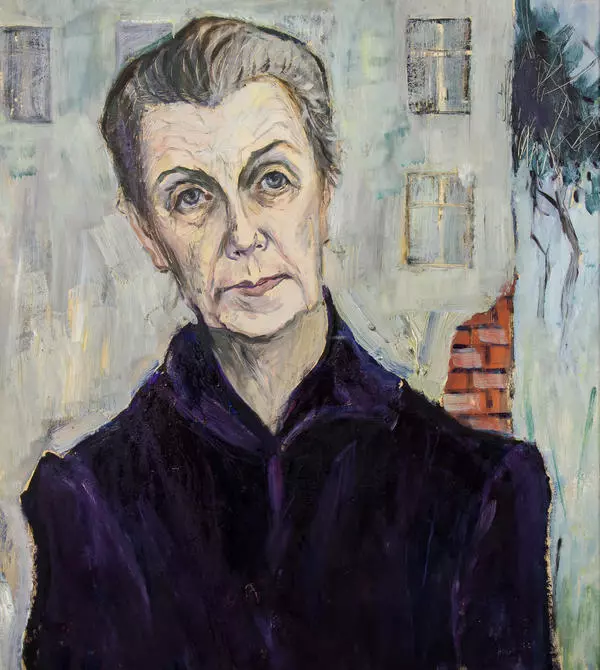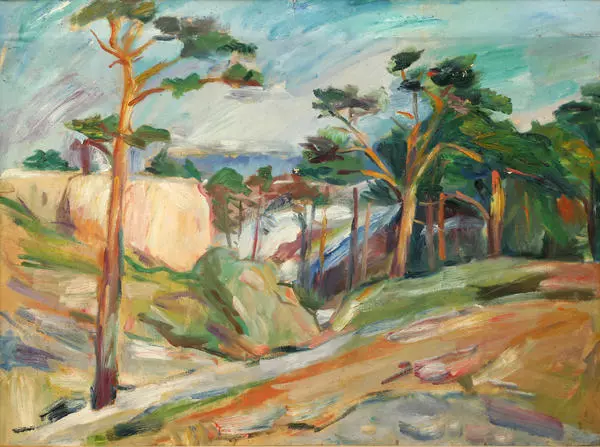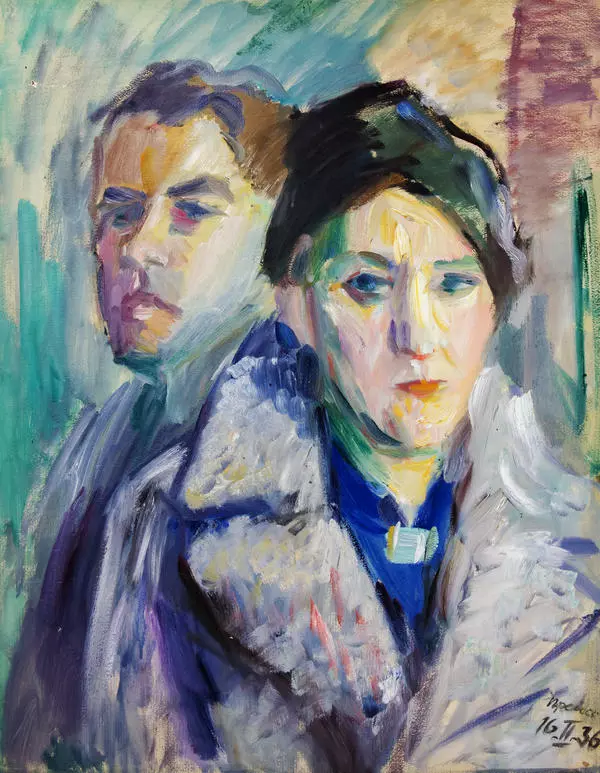Soviet and European artist Jurgis Preiss painted the portrait of the German theatre and film actress Gisela May in 1966 at the height of the Kemerovo period, which lasted from 1956 to 1984. That time period is considered the longest in the artistic life of Preiss. At the time, Preiss lived and worked in Kemerovo, with a short break in the early 1960s when he travelled abroad. The art piece entered the collection of the Kemerovo Regional Museum of Fine Arts in 1991 from Lyudmila Biryukova, the adopted daughter of Preiss and his heiress. Soviet and European artist Jurgis Preiss painted the portrait of the German theatre and film actress Gisela May in 1966 at the height of the Kemerovo period, which lasted from 1956 to 1984. That time period is considered the longest in the artistic life of Preiss. At the time, Preiss lived and worked in Kemerovo, with a short break in the early 1960s when he travelled abroad. The art piece entered the collection of the Kemerovo Regional Museum of Fine Arts in 1991 from Lyudmila Biryukova, the adopted daughter of Preiss and his heiress.
#1
Jurgis Preiss
Portrait of Actress Gisela May as Madame Cabet in Bertolt Brecht’s Play The Days of the Commune
#2
#3
About portrait
#4
In the portrait, Preiss portrayed Gisela May as the seamstress Madame Cabet — the heroine of the play The Days of the Commune, written by the prosaist and playwright Bertolt Brecht in 1949. The production was first staged in 1956 in the German city of Karl-Marx-Stadt, today known as Chemnitz. Some critics called it unemotional and overlong.
Six years later, Brecht edited the text of The Days of the Commune and produced the play on the stage of his drama theatre Berliner Ensemble with Gisela May in the lead female role. Researchers assume that it was in Berlin that Preiss saw The Days of the Commune for the first time: the artist lived in the capital of the German Democratic Republic from October 1963 to April 1965.
He painted the portrait of Gisela May later, already in Kemerovo, according to the impressions and memories of the play. Preiss retained a resemblance to the actress, but at the same time created a sharp, nervous, eccentric image of the theatrical character – Madame Cabet. He deliberately exaggerated the image, having traced her head and shoulders with angular lines with a black outline. The schematic images of trees in the background are unnatural and resemble a theatrical backdrop. The contrasting combination of cold and warm colours adds sharpness to the picture.
Preiss’ rough, fast painting style, wide brushstrokes in the portrait emphasize the disharmony of Gisela’s image. Experts believe that the style of the artist was greatly influenced by German Expressionism, popular in the first half of the 20th century as one of the reactions of art to the First World War. Artists of this movement abandoned realism, stylization and symbolic figures. Through artistic means, they sought to express their emotional state — their own or of those depicted in the portraits.
Six years later, Brecht edited the text of The Days of the Commune and produced the play on the stage of his drama theatre Berliner Ensemble with Gisela May in the lead female role. Researchers assume that it was in Berlin that Preiss saw The Days of the Commune for the first time: the artist lived in the capital of the German Democratic Republic from October 1963 to April 1965.
He painted the portrait of Gisela May later, already in Kemerovo, according to the impressions and memories of the play. Preiss retained a resemblance to the actress, but at the same time created a sharp, nervous, eccentric image of the theatrical character – Madame Cabet. He deliberately exaggerated the image, having traced her head and shoulders with angular lines with a black outline. The schematic images of trees in the background are unnatural and resemble a theatrical backdrop. The contrasting combination of cold and warm colours adds sharpness to the picture.
Preiss’ rough, fast painting style, wide brushstrokes in the portrait emphasize the disharmony of Gisela’s image. Experts believe that the style of the artist was greatly influenced by German Expressionism, popular in the first half of the 20th century as one of the reactions of art to the First World War. Artists of this movement abandoned realism, stylization and symbolic figures. Through artistic means, they sought to express their emotional state — their own or of those depicted in the portraits.
#5
Kemerovo Regional Museum of Fine Arts
читать дальшескрыть
00:00
00:00
1x
Actress Gisela May
Время создания
1966
Размер
59x52 cm
59×52 cm
59×52 cm
Техника
Oil on canvas
1
Открыть в приложении
Поделиться

